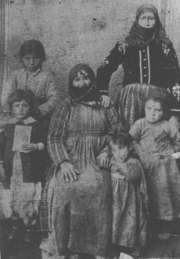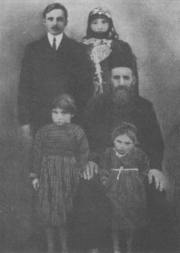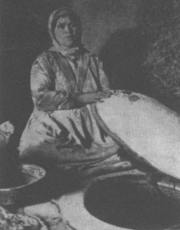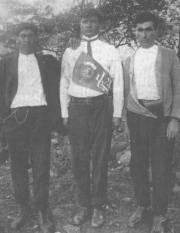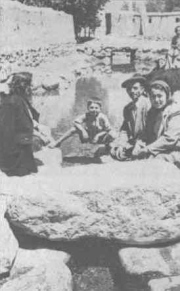About Us
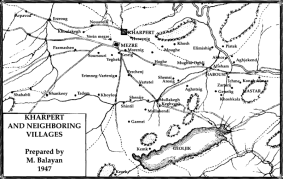 Kharpert and neighboring villages. Mezre is the Armenian name for Elazig.Enlarge
Kharpert and neighboring villages. Mezre is the Armenian name for Elazig.EnlargeThe first Habousetzies immigrated to the United States in the 1890's, many of them settling in the Merrimack Valley area, where they worked in the mills or established farms. Others followed from the early 1900's through the 1930's.
These new immigrants had close social ties to one another, much like that of a large extended family. Having lost nearly everything of their past, including many family members, they were determined to keep their culture, their language, and their religion alive in what seemed at first like a hostile environment. Since they valued education highly, they organized small groups to raise money to send home to the little parochial schools (one Apostolic and one Protestant) in their beloved village. These early groups became known as The Education Societies of Habousi.
During the 1915-1923 period of Turkish massacres and deportations, when the Habousetzie immigrants learned of the destruction and pillage of Habousi, scattering refugees and orphans throughout the Middle East, they turned their focus on helping the survivors after the war ended. At that time they called themselves The Reconstruction Society of Habousi.
In 1925 all of the groups met at the Kachadorian farm in Methuen and merged into one group called The Compatriotic Union of Habousi, a benevolent society organized for the purpose of locating and helping the many displaced and needy Habousetzies around the world. The group also served as a haven for the newer immigrants to the United States, who had suffered the ravages of war. It provided educational assistance to the children of Habousetzies around the world. Every year for many years, it sponsored one of the largest and best known Armenian picnics in the Merrimack Valley, providing Armenian culture, foods, music, and dancing as well as reunion for Habousetzies and their families and friends from many locations in the United States. For many years these picnics were held at the Kachadorian farm in Salem, New Hampshire.
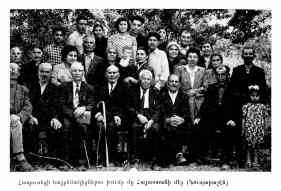 EnlargeThe Compatriotic Union in the 1950's
EnlargeThe Compatriotic Union in the 1950'sIn 1963, after many years of laborious writing and rewriting and many discouraging attempts at publishing, The Publications Committee announced the publication of the proud history of the village of Habousi in Armenian (with an English condensation) by Baikar Press. Most Habousetzie descendants have copies of that book and a restoration of the residential map in their homes as part of their heritage. (In 1939, Elizabeth Caraman Payne had written her autobiography of life in Habousi, published by Harper and Brothers.) The first Habousetzies in America did their work well and left a remarkable legacy. However, as the older generations passed on, the organization became inactive in the 1970's. Its work seemed to be done.
In 1985, because of a resurgence of interest in roots on the part of some descendants, The Compatriotic Union of Habousi was reactivated and nearly 200 descendants were located in the Merrimack Valley and throughout the country. For the past nine years, this new group has been meeting in Salem, New Hampshire, for benevolent, educational, social, and historical purposes. They wish "to honor the memory of Habousi's original inhabitants, our ancestors; to provide compatriotic reunion and social communication; to help descendants around the world who need financial support, especially in war-disadvantaged countries."
To date, this group has provided two scholarships annually to worthy descendants entering college. It has searched for and supported elderly Habousetzies in Middle Eastern countries and provided disaster relief for children's needs in Armenia. To satisfy the need for roots, some members of the group have restored and printed in color the original immigrants' map of the village of Habousi, where each Habousetzie can find his ancestral home and those of his neighbors.
Understanding the needs of the younger generation, this website has been created to better communicate with them and to permanently memorialize the village of Habousi and its inhabitants.

